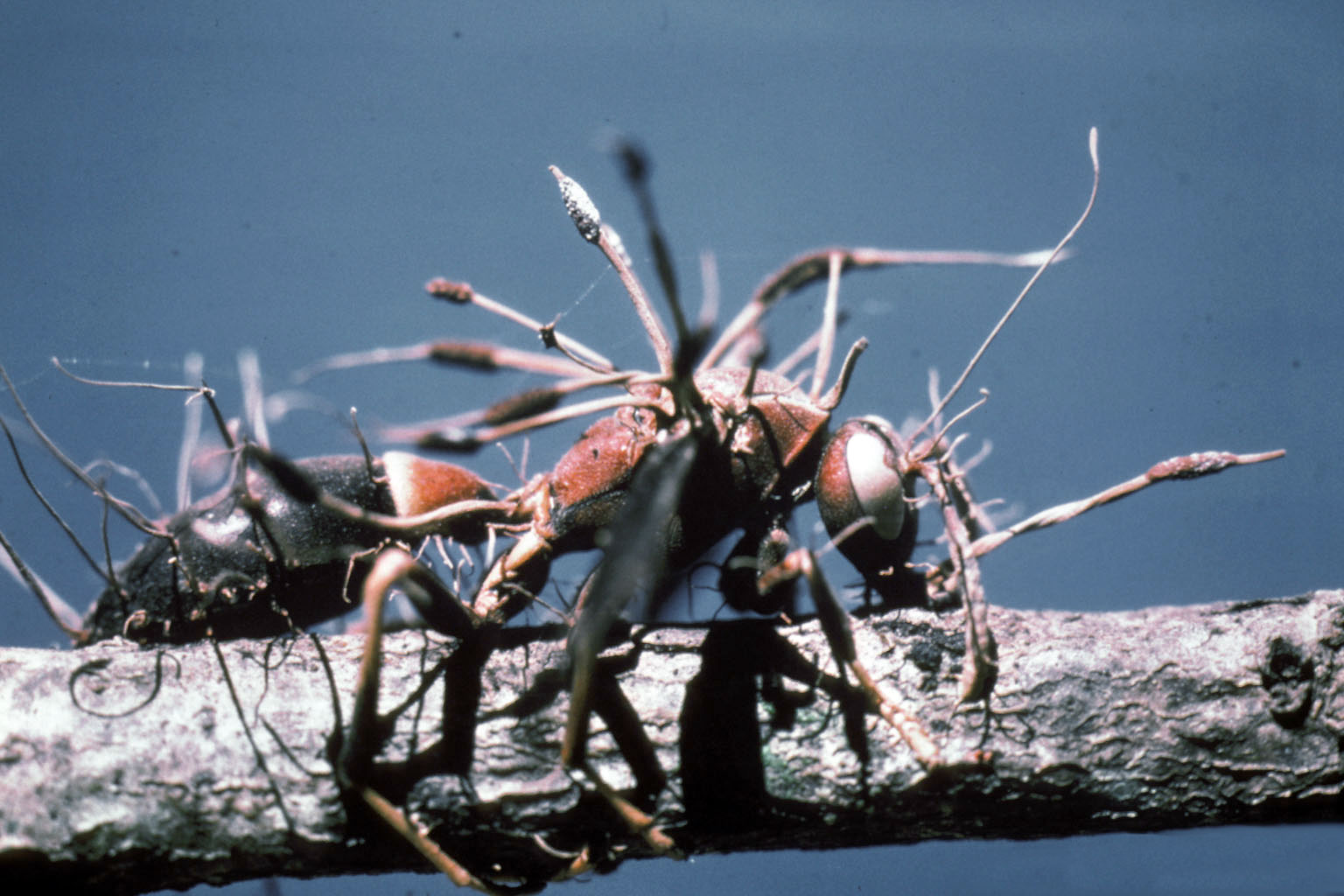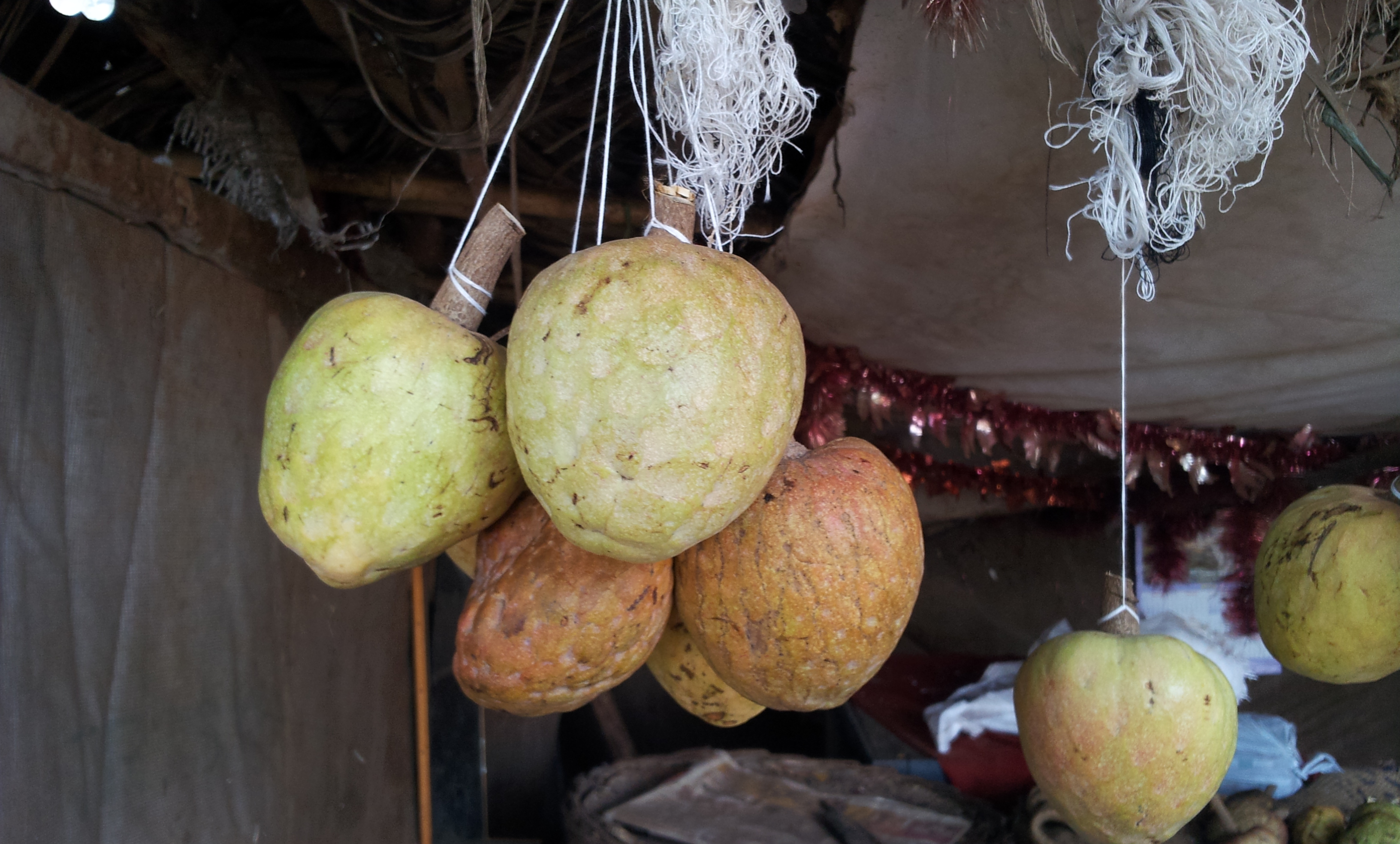|
Coccus Viridis
''Coccus viridis'' is a soft scale insect in the family Coccidae with a wide host range. It is commonly known as green scale or sometimes coffee green scale because it is a major pest of coffee crops throughout the world. Description The adult scale insect is a glossy pale green colour with black internal markings that are visible through the chitinous body wall. It has a flattish elongated oval dome shape and is about three millimetres in width. The front end is rounded while the rear end has a distinctive groove. Adults retain their legs and antennae but mostly remain sedentary. The nymphs are a flattish oval shape, yellowish green, with six short legs. The nymphs shed their skin three times and each instar is larger and more convex than the previous one.Fredrick, J. M. 1943. Some Preliminary Investigations of the Green Scale, ''Coccus viridis'' (Green), in South Florida. Florida Ent. 26(1): 12-15; 26(2): 25-29. Biology Males have not been recorded for this species so the pop ... [...More Info...] [...Related Items...] OR: [Wikipedia] [Google] [Baidu] |
Coccidae
The Coccidae are a family of scale insects belonging to the superfamily Coccoidea. They are commonly known as soft scales, wax scales or tortoise scales. The females are flat with elongated oval bodies and a smooth integument which may be covered with wax. In some genera they possess legs but in others, they do not, and the antennae may be shortened or missing. The males may be winged or wingless. Genera There are >1,100 spp. in 171 genera worldwide. *Subfamily Myzolecaniinae ** '' Akermes'' ** '' Alecanium'' ** '' Alecanopsis'' ** '' Cribolecanium'' ** '' Cryptostigma'' ** '' Cyclolecanium'' ** '' Halococcus'' ** '' Houardia'' ** '' Megasaissetia'' ** '' Myzolecanium'' ** '' Neolecanium'' ** '' Paractenochiton'' ** '' Pseudophilippia'' ** '' Richardiella'' ** '' Torarchus'' ** '' Toumeyella'' ** '' Xenolecanium'' * '' Antecerococcus'' * '' Ceroplastes'' * ''Coccus A coccus (plural cocci) is any bacterium or archaeon that has a spherical, ovoid, or generally round shap ... [...More Info...] [...Related Items...] OR: [Wikipedia] [Google] [Baidu] |
Scale Insect
Scale insects are small insects of the order Hemiptera, suborder Sternorrhyncha. Of dramatically variable appearance and extreme sexual dimorphism, they comprise the infraorder Coccomorpha which is considered a more convenient grouping than the superfamily Coccoidea due to taxonomic uncertainties. Adult females typically have soft bodies and no limbs, and are concealed underneath domed scales, extruding quantities of wax for protection. Some species are hermaphroditic, with a combined ovotestis instead of separate ovaries and testes. Males, in the species where they occur, have legs and sometimes wings, and resemble small flies. Scale insects are herbivores, piercing plant tissues with their mouthparts and remaining in one place, feeding on sap. The excess fluid they imbibe is secreted as honeydew on which sooty mold tends to grow. The insects often have a mutualistic relationship with ants, which feed on the honeydew and protect them from predators. There are about 8,000 descr ... [...More Info...] [...Related Items...] OR: [Wikipedia] [Google] [Baidu] |
Entomopathogenic Fungus
An entomopathogenic fungus is a fungus that can kill or seriously disable insects. Typical life cycle These fungi usually attach to the external body surface of insects in the form of microscopic spores (usually asexual, mitosporic spores also called conidia). Under the right conditions of temperature and (usually high) humidity, these spores germinate, grow as hyphae and colonize the insect's cuticle; which they bore through by way of enzymatic hydrolysis, reaching the insects' body cavity (hemocoel). Then, the fungal cells proliferate in the host body cavity, usually as walled hyphae or in the form of wall-less protoplasts (depending on the fungus involved). After some time the insect is usually killed (sometimes by fungal toxins), and new propagules (spores) are formed in or on the insect if environmental conditions are again right. High humidity is usually required for sporulation. Groups The entomopathogenic fungi include taxa from several of the main fungal groups and ... [...More Info...] [...Related Items...] OR: [Wikipedia] [Google] [Baidu] |
Annona Squamosa
''Annona squamosa'' is a small, well-branched tree or shrub from the family Annonaceae that bears edible fruits called sugar-apples or . It tolerates a tropical lowland climate better than its relatives ''Annona reticulata'' and ''Annona cherimola'' (whose fruits often share the same name) helping make it the most widely cultivated of these species. ''Annona squamosa'' is a small, semi-(or late) deciduous, much-branched shrub or small tree tall similar to soursop ('' Annona muricata''). Description The fruit of ''A. squamosa'' (sugar-apple) has sweet whitish pulp, and is popular in tropical markets. Stems and leaves Branches with light brown bark and visible leaf scars; inner bark light yellow and slightly bitter; twigs become brown with light brown dots (lenticels – small, oval, rounded spots upon the stem or branch of a plant, from which the underlying tissues may protrude or roots may issue). Thin, simple, alternate leaves occur singly, long and wide; rounded at t ... [...More Info...] [...Related Items...] OR: [Wikipedia] [Google] [Baidu] |
Plumeria
''Plumeria'' (), known as frangipani, is a genus of flowering plants in the subfamily Rauvolfioideae, of the family Apocynaceae. Most species are deciduous shrubs or small trees. The species variously are endemic to Mexico, Central America, and the Caribbean, and as far south as Brazil and north as Florida (United States), but are sometimes grown as cosmopolitan ornamentals in warm regions. Common names for plants in the genus vary widely according to region, variety, and whim, but frangipani or variations on that theme are the most common. Plumeria is also used as a common name, especially in horticultural circles. Description ''Plumeria'' flowers are highly fragrant, yet yield no nectar. Their scent is strongest at night, to lure sphinx moths into pollinating them by transferring pollen from flower to flower in their fruitless search for nectar. Insects or human pollination can help create new varieties of plumeria. Plumeria trees from cross-pollinated seeds may show characte ... [...More Info...] [...Related Items...] OR: [Wikipedia] [Google] [Baidu] |
Orchid
Orchids are plants that belong to the family Orchidaceae (), a diverse and widespread group of flowering plants with blooms that are often colourful and fragrant. Along with the Asteraceae, they are one of the two largest families of flowering plants. The Orchidaceae have about 28,000 currently accepted species, distributed in about 763 genera. (See ''External links'' below). The determination of which family is larger is still under debate, because verified data on the members of such enormous families are continually in flux. Regardless, the number of orchid species is nearly equal to the number of bony fishes, more than twice the number of bird species, and about four times the number of mammal species. The family encompasses about 6–11% of all species of seed plants. The largest genera are ''Bulbophyllum'' (2,000 species), ''Epidendrum'' (1,500 species), ''Dendrobium'' (1,400 species) and ''Pleurothallis'' (1,000 species). It also includes ''Vanilla'' (the genus of the ... [...More Info...] [...Related Items...] OR: [Wikipedia] [Google] [Baidu] |
Orange (fruit)
An orange is a fruit of various citrus species in the family (biology), family Rutaceae (see list of plants known as orange); it primarily refers to Citrus × sinensis, ''Citrus'' × ''sinensis'', which is also called sweet orange, to distinguish it from the related ''Citrus × aurantium'', referred to as bitter orange. The sweet orange reproduces asexually (apomixis through nucellar embryony); varieties of sweet orange arise through mutations. The orange is a Hybrid (biology), hybrid between pomelo (''Citrus maxima'') and Mandarin orange, mandarin (''Citrus reticulata''). The chloroplast genome, and therefore the maternal line, is that of pomelo. The sweet orange has had its full Whole genome sequencing, genome sequenced. The orange originated in a region encompassing Southern China, Northeast India, and Myanmar, and the earliest mention of the sweet orange was in Chinese literature in 314 BC. , orange trees were found to be the most Tillage, cultivated fruit tree in the wo ... [...More Info...] [...Related Items...] OR: [Wikipedia] [Google] [Baidu] |
Macadamia
''Macadamia'' is a genus of four species of trees in the flowering plant family Proteaceae. They are indigenous to Australia, native to northeastern New South Wales and central and southeastern Queensland specifically. Two species of the genus are commercially important for their fruit, the macadamia nut (or simply macadamia). Global production in 2015 was . Other names include Queensland nut, bush nut, maroochi nut, bauple nut and Hawaii nut. In Australian Aboriginal languages, the fruit is known by names such as ''bauple'', ''gyndl'' or ''jindilli'' (north of Great Dividing Range) and ''boombera'' (south of the Great Range). It was an important source of bushfood for the Aboriginal peoples who are the original inhabitants of the area. The nut was first commercially produced on a wide scale in Hawaii, where Australian seeds were introduced in the 1880s, and for some time, they were the world's largest producer. South Africa has been the world's largest producer of the maca ... [...More Info...] [...Related Items...] OR: [Wikipedia] [Google] [Baidu] |
Lime (fruit)
A lime (from French language, French ''lime'', from Arabic ''līma'', from Persian language, Persian ''līmū'', "lemon") is a citrus fruit, which is typically round, lime (color), green in color, in diameter, and contains acidic juice vesicles. There are several species of citrus trees whose fruits are called limes, including the Key lime (''Citrus aurantiifolia''), Persian lime, kaffir lime, Makrut lime, and Citrus glauca, desert lime. Limes are a rich source of vitamin C, are sour, and are often used to accent the flavours of foods and beverages. They are grown year-round. Plants with fruit called "limes" have diverse genetic origins; limes do not form a monophyletic group. Plants known as "lime" The difficulty in identifying exactly which species of fruit are called lime in different parts of the English-speaking world (and the same problem applies to synonyms in other European languages) is increased by the botanical complexity of the citrus genus itself, to which the m ... [...More Info...] [...Related Items...] OR: [Wikipedia] [Google] [Baidu] |
Guava
Guava () is a common tropical fruit cultivated in many tropical and subtropical regions. The common guava ''Psidium guajava'' (lemon guava, apple guava) is a small tree in the myrtle family ( Myrtaceae), native to Mexico, Central America, the Caribbean and northern South America. The name guava is also given to some other species in the genus ''Psidium'' such as strawberry guava (''Psidium cattleyanum'') and to the pineapple guava, '' Feijoa sellowiana''. In 2019, 55 million tonnes of guavas were produced worldwide, led by India with 45% of the total. Botanically, guavas are berries. Types The most frequently eaten species, and the one often simply referred to as "the guava", is the apple guava ('' Psidium guayava''). Guavas are typical Myrtoideae, with tough dark heavy leaves that are opposite, simple, elliptic to ovate, and long. The flowers are white, with five petals and numerous stamens. The fruits are many-seeded berries. Etymology The term ''guava'' appears ... [...More Info...] [...Related Items...] OR: [Wikipedia] [Google] [Baidu] |
Ginger
Ginger (''Zingiber officinale'') is a flowering plant whose rhizome, ginger root or ginger, is widely used as a spice A spice is a seed, fruit, root, bark, or other plant substance primarily used for flavoring or coloring food. Spices are distinguished from herbs, which are the leaves, flowers, or stems of plants used for flavoring or as a garnish. Spice ... and a folk medicine. It is a herbaceous perennial plant, perennial which grows annual pseudostems (false stems made of the rolled bases of leaves) about one meter tall bearing narrow leaf blades. The inflorescences bear flowers having pale yellow petals with purple edges, and arise directly from the rhizome on separate shoots. Ginger is in the family (taxonomy), family Zingiberaceae, which also includes turmeric (''Curcuma longa''), cardamom (''Elettaria cardamomum''), and galangal. Ginger originated in Maritime Southeast Asia and was likely domesticated first by the Austronesian peoples. It was transported with ... [...More Info...] [...Related Items...] OR: [Wikipedia] [Google] [Baidu] |
Annona Reticulata
''Annona reticulata'' is a small deciduous or semi-evergreen tree in the plant family Annonaceae and part of the Annonas group. It is best known for its fruit, called custard apple, a common name shared with fruits of several other species in the same genus: '' A. cherimola'' and '' A. squamosa''. Other English common names include ox heart and bullock's heart. The fruit is sweet and useful in preparation of desserts, but is generally less popular for eating than that of '' A. cherimola''. Description It is a small deciduous or semi-evergreen tree reaching to tall with an open, irregular crown. The slender leaves are hairless, straight and pointed at the apex (in some varieties wrinkled), to long and to wide. The yellow-green flowers are generally in clusters of three or four to diameter, with three long outer petals and three very small inner ones. Its pollen is shed as permanent tetrads.Walker JW (1971) Pollen Morphology, Phytogeography, and Phylogeny of the Annona ... [...More Info...] [...Related Items...] OR: [Wikipedia] [Google] [Baidu] |







.jpg)



